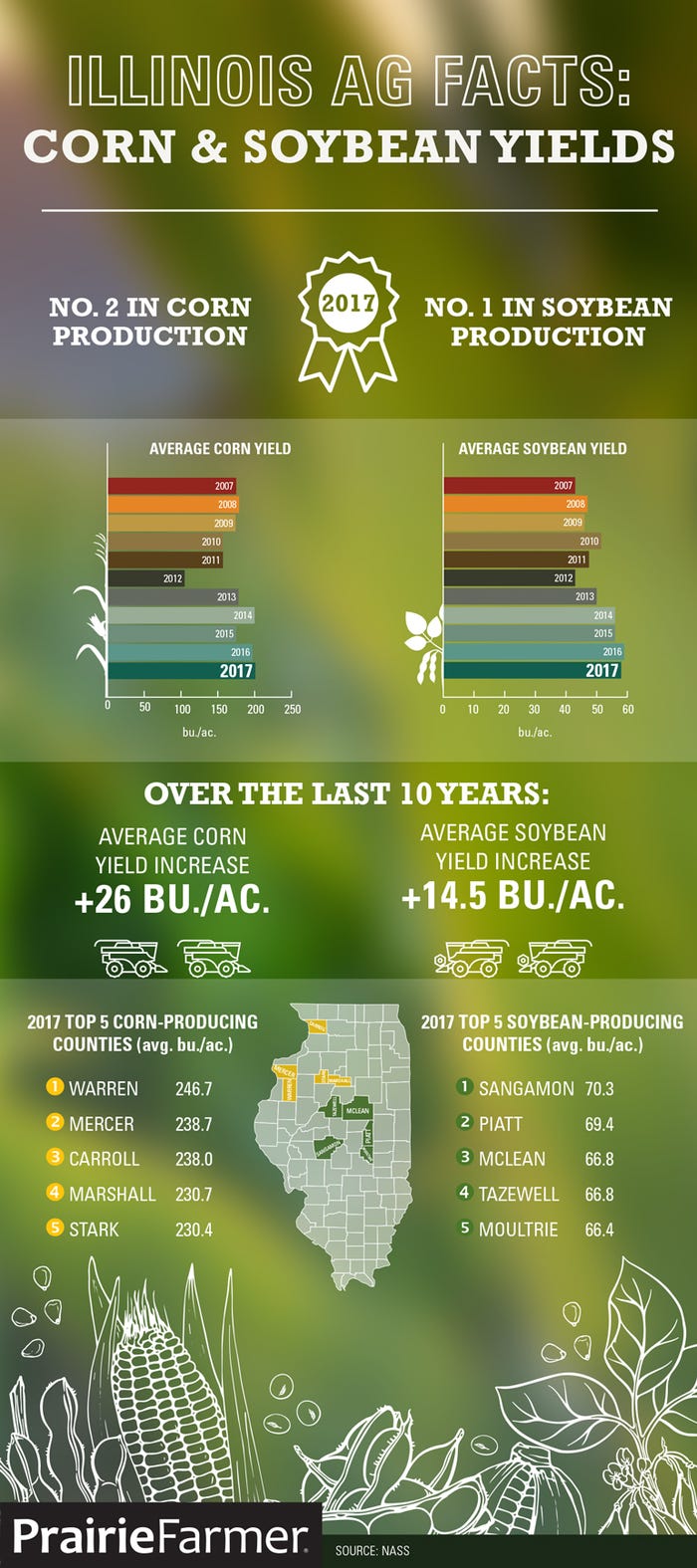
Illinois farmers have been busy over the last few years, breaking production records and crushing average yields (see infographic below).
“Farmers are increasing yields while cutting back on inputs to survive,” says Stephanie Porter, Burrus Seed sales agronomist, adding that farmers scrutinize every input decision, including traits, nutrients and seeding rates.
As farmers gear up for the 2018 season, what’s the secret to another successful year?
In Warren County, where the highest average corn yield in the nation in 2017 was harvested, Porter says farmers planted in optimum conditions, managed nutrients and used variable seeding rates to improve stands and minimize costs.
Over the past 10 years, farmers have become more efficient with nitrogen applications by cutting rates, changing timing or using precision technology to pinpoint variable rates. “We’re getting better at taking that mountain of data and learning to apply it,” says Matt Montgomery, DuPont Pioneer field agronomist.
Add solid management decisions to fertile soils, timely rains, minimal pest pressure and cool nights during pollination and grain fill, and you have the successful 2017 season.
In Sangamon County, Montgomery credits early planting, cool temperatures and minimal stress during pod fill for the highest average soybean yields in 2017. “We have to be gentle on beans during pod fill, and we need adequate moisture,” Montgomery says. “We had that.”
What it means for 2018
As soil temperatures linger below normal and the forecast remains bleak at best — with snow falling on Easter for much of the state — will farmers miss the early-planting window? For most of Illinois, Montgomery says soybeans planted before the third week in May historically have a yield advantage. On average, half the corn crop is planted before May 1.
But don’t let the calendar drive your decisions, Porter says. Focus instead on the long-term forecast and proper soil conditions.
“We put a lot of emphasis on soil temperatures,” Porter notes. “We should put more emphasis on planting into a warming trend and making sure the soil is fit.”
In 2017, corn planted in optimum soil conditions in May outyielded corn planted right before heavy rain in April.
“Don’t mud it in or plant right before a big downpour,” Porter says. “You won’t get that stand, and you’ll give up some yield.”

About the Author(s)
You May Also Like




